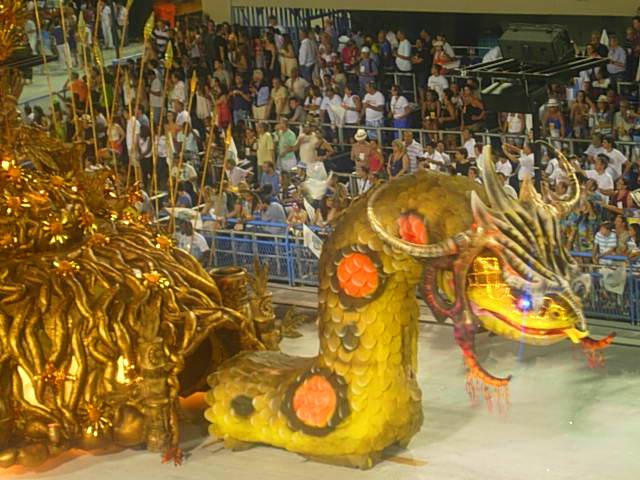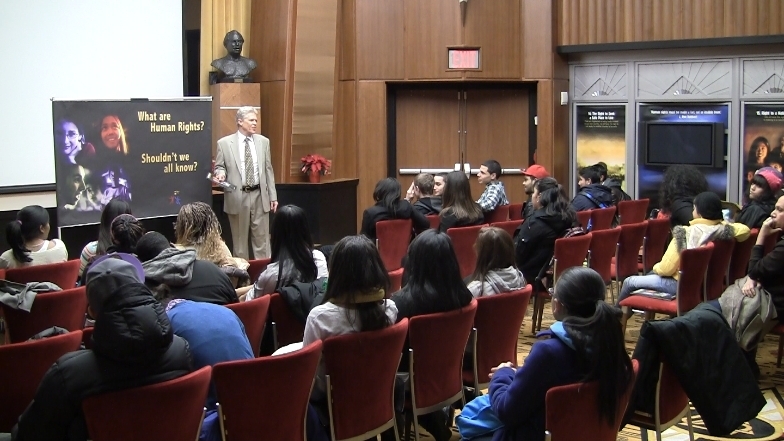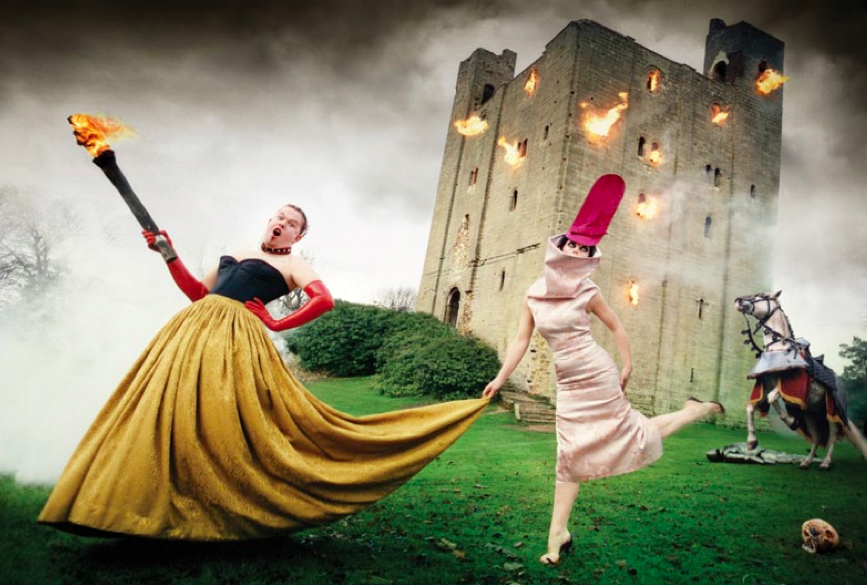Every year the Carnival of Brazil paints a colourful collage of unimaginable props and floats, enticing dancers, exotic costumes, and parties galore. Carnival celebrations in Rio de Janeiro become the nation’s pivotal attraction glorified by the grand Samba Parade, housed within the concrete walls of the Sambadrome stadium, consisting of an avenue with stands on either side. Twelve of the most talented samba schools prepare a year in advance, hand-stitching costumes, choosing themes and assembling 80 minute performances to compete for the championship, as over 70,000 spectators cheer them on. There are over 70 schools that traditionally formed from within different neighborhoods in Rio de Janeiro.
Samba form of music and dance began gaining popularity in the 20s when dancers, choreographers and musicians gathered regularly on school grounds to practice their art. They soon evolved into formal associations or clubs, with their own trademark colours and symbols. Community leaders held competitions and schools competed for the best costumes, floats, music and dance routines. In 1932, the first official parade took place in some of the oldest streets, often shanties made of brick and concrete, called “favelas”. As competitions gained a greater audience, a formal structure was required and the city government commissioned Brazilian architect Oscar Niemeyer to design a permanent samba parade venue, inaugurated March 1984.
Samba school participants are judged in 10 categories: Percussion Band, Samba Song, Harmony, Flow and Spirit, Floats and Props, Costumes, Vanguard Group, The Flag Bearer, Theme of the Year, and Overall Impression. Each of the categories has four appointed judges who allocate points on a scale of five to 10, with 10 being the highest. While the Vanguard Group is critiqued for choreography of its performance, The Flag Bearer and her escort are evaluated for coordination as a couple, proficiency in dancing, poise, flexibility and range. The other categories follow a similar evaluation. Spectators have their preferred hovering areas at school rehearsals in respective neighborhoods months prior to the show. They can also observe preparations at the Sambadrome weeks leading up to the big event. During showtime, many of them dance in rhythm of the songs, snack on ice cream and dress in abadás—logo shirts which cost anywhere from 60 to 500 dollars. The abadás grant them access to box suites called “camarotes”, known to be visited by English actor Jude Law and American showgirl Pamela Anderson.
The parade has a number of other crucial players. The Carnival King or “Rei Momo”, named after the Greek god of satire, inaugurates the celebrations. There was once a minimum weight -264 lbs- which was abolished in recent years. A number of beautiful and muscular women compete for the title of Carnival Queen while the equally stunning runner-ups are named Carnival Princesses. Participants are split into various groups of 20 to 100 called the Wings or “Alas”. Each wing has its president ensuring the costumes are produced on time, its flagbearer accompanied by an appointed protector and its queen leading the procession. In between wings are eight to 10 mechanical, allegorical floats that can stand as high as 50 feet, which carry a motley array of vocalists, drummers and samba dancers. Brazilian artist Joãosinho Trinta, famous for saying that “poor people like luxury; those who like poverty are intellectuals,” revolutionized the Rio Carnival, by insisting that samba dancers cavort atop the sound truck!
The Samba dance and music is not indigenous to Brazil. It has its roots in West African and Angolan slave trade. When Portugal colonized Brazil in the 1500s, African slaves settled in Rio and other coastal cities, bringing with them tribal practices. For example, ancient customs included parading and circling the villages to ward off evil spirits. It was also common to craft masks and costumes out of stones, bones, grasses and other natural materials. Using feathers was popular as they symbolized the rise and rebirth of spirits. All these elements became major components of today’s Brazil Carnival.
The term carnival comes from carne vale, meaning “goodbye to meat”. Significantly, celebrations precede Lent, which begins on Ash Wednesday, and is observed by Christians as a 40 day period of fasting and abstinence. Hundreds of years ago, pre-Lent Carnivals were first introduced in Italy, spreading to France, Spain and other European countries. The exuberance and celebration associated with the Brazil Carnival can be viewed as the last great party before six long weeks of sacrifice. It has evolved into what it is today—a hysterical, maniacal, four-day event of gargantuan proportions open to all religions and cultures. For many Brazilians, it represents the start of a new year often rewarding extended vacations.
A significant component of the festivities include the balls. The first masked ball took place in 1849 and cost $1000 to enter. Soon major hotels and establishments began holding grand and ostentatious events like the Magic Ball at the Copacabana Palace Hotel. The appetite for admittance becomes palpable with guest appearance from local celebrity Gisele Bündchen and international star Brigitte Bardot. The Scala nightclub set the stage for thematic carnival balls—six throughout the festival including the grand finale Gay Costume Ball, for gays and lesbians, for crossdressers and transvestites, and for straights. A must, people say, with a glint, as the red carpet famously showcases extravagant, glitzy costumes and triumphant entrances by toned, tall, smiling drag queens. The local, “carioca” flavor takes place free of charge in the streets. Wellknown street bands frequently march throughout the city in districts such as Lapa, full of alcohol stalls lined along its infamous Roman aqueduct. In neighboring Botafogo, the Barbas block party carries a water truck to hose down partygoers. The more upmarket area of Leblon, with its rather calm, shantytown overshadowing the Sheraton hotel, offers more block parties. Others scattered on tall hills in the outskirts of the city showcase their own marching bands that often descend from the top. The hub of activity spills into the crescent-shaped Copacabana beach, reaching a frenzied stateof samba rehearsals, and into the curving Ipanema beach, retaining a junction between musicians and dancers.
The Carnival season is a potpourri of music, dance, festivities, hysteria, culture and beauty. Arguably the greatest show on earth, of marvel, of talent, of proportion, the Rio Carnival has become a benchmark against which every other carnival is compared. Continuing to invigorate the mind, body and soul of Brazil and attracting close to half a million foreign visitors, Rio de Janeiro, without disappointment, wins the crown for the brightest festival on earth.









